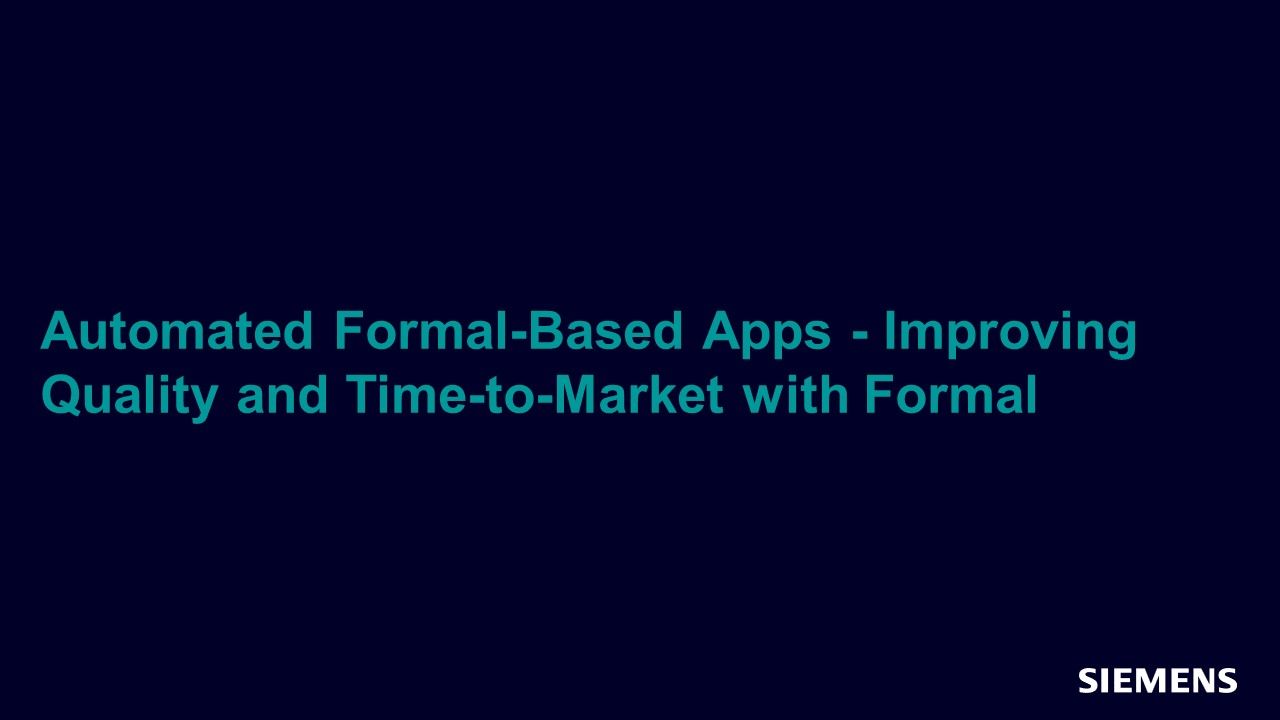Automated Formal-Based Apps - Improving Quality and Time-to-Market with Formal
In this session, you will learn how formal apps can help you address high-value verification challenges; finding deep bugs in complex logic, accelerating code coverage closure, uncovering register policy corner cases, validating low power clock gating, late ECOs or bug fixes, or fault/SEU mitigation logic and more.

Full-access members only
Register your account to view Automated Formal-Based Apps - Improving Quality and Time-to-Market with Formal
Full-access members gain access to our free tools and training, including our full library of articles, recorded sessions, seminars, papers, learning tracks, in-depth verification cookbooks, and more.